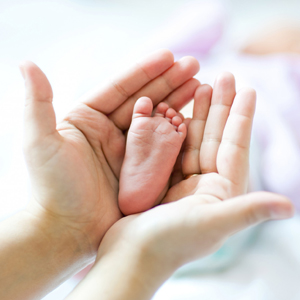Post-Hysterectomy Prolapse
“Empowering Women to Overcome Post-Hysterectomy Prolapse”
A hysterectomy in itself can be a challenging experience for many women. The physical and emotional impact of the procedure can depend on person to person, and it can be especially difficult for women who have had a hysterectomy due to cancer or other serious medical conditions. The challenge can be further aggravating if they have to go through another debilitating condition after a hysterectomy like a prolapse.
It is important that women who go through post-hysterectomy prolapse feel supported, well cared for and get the right medical care to get through this challenging condition.
Giggles Hospitals for Women And Children Hospital in Kukatpally, ensure that our patients feel supported and get compassionate and holistic care through their journey of getting past Post-Hysterectomy Prolapse.
Post-Hysterectomy Prolapse
Post-Hysterectomy Prolapse is a complication that some women may go through after a hysterectomy. In this condition, the pelvic organs, such as the bladder, rectum, or vagina, fall out of their normal positions and bulge into the vaginal canal after a hysterectomy. Post-Hysterectomy Prolapse can cause extreme pain, discomfort, difficulty in bowel movements, and sexual dysfunction.
Symptoms
Women suffering from Post-Hysterectomy Prolapse may go through debilitating and discomforting symptoms that affect the quality of their life. These include the following:
- A sensation of pelvic fullness or pressure
- A sudden vaginal sensation of something being expelled
- Complete prolapse (a condition where a section of the vaginal vault protrudes out of the vaginal opening)
- Difficulty urinating or bowel movements
- Incontinence or urine leakage
- Lower back pain or pain in the pelvic area
- Painful sexual intercourse
- Recurrent urinary tract infections
- Vaginal bleeding or discharge
- Vaginal spotting or bleeding after sex.
Every woman may experience the symptoms of Post-Hysterectomy prolapse differently. However, it is important to seek medical care to get the right treatment.
Causes
Post-Hysterectomy prolapse occurs mainly due to the stretching and weakening of a woman’s pelvic floor muscles, tissues and ligaments after a hysterectomy. Surgical procedures can result in damage to pelvic floor muscles and ligaments, potentially causing prolapse of neighbouring pelvic organs like the bladder or rectum.
Other factors that can contribute to post-hysterectomy prolapse include age, menopause, obesity, chronic coughing, and heavy lifting. Hysterectomy is a major surgery that involves risks, recovery time, and possible side effects. Post-Hysterectomy prolapse is one such major complication of the procedure that can significantly impact a woman’s life.
Diagnosing Vaginal Atrophy at Giggles Hospital
Post-Hysterectomy prolapse can be diagnosed after a physical examination and review of the patient’s medical history. Our doctors will check for the presence of any pelvic organ prolapse, such as a bulge in the vaginal wall or cervix. Following that, certain additional tests may be recommended to confirm the diagnosis. These may include:
- MRI
- CT Scan
- Ultrasound
- Urodynamic testing to evaluate bladder function.
Giggles Hospital’s team of skilled and experienced healthcare professionals of Best Gynecologists near me utilise advanced diagnostic techniques to accurately identify post-hysterectomy prolapse, ensuring the best possible outcomes for their patients.
Treatment for Post-hysterectomy prolapse at Giggles Hospital
Post-hysterectomy prolapse treatment depends on the severity of the condition, protruding organs and other factors. At Giggles Hospital, we offer a range of treatment options for Post-hysterectomy prolapse based on each patient’s unique needs and preferences. Common treatment plans for Post-hysterectomy prolapse may include the following:
- Pelvic floor muscle exercises (to strengthen the muscles that support the pelvic organs and reduce urinary incontinence and pain)
- Pessary use (a device inserted into the vagina to support the pelvic organs)
- Hormone therapy (to improve tissue strength and elasticity)
- Surgery (to repair the pelvic floor or use a mesh implant to provide support to the pelvic organs). Common surgical treatments include:
- Colpocleisis: In this procedure, the vagina is surgically closed to reduce the possibility of another prolapse.
- Sacrocolpopexy: In this surgical procedure, a mesh is utilised to attach the vaginal vault to the tailbone.
- Vaginal vault suspension: The pelvic ligaments are used to attach the vagina in this procedure.
Our healthcare professionals collaborate closely with individual patients to develop tailored treatment plans that prioritise their particular symptoms and concerns. In doing so, we aim to deliver effective care that enhances not only their vaginal health but also their overall sense of well-being.
Why Choose Giggles Hospitals?
If you or a loved one is suffering from post-hysterectomy prolapse symptoms, Giggles Hospital for Best women’s hospital near me, offers comprehensive care and treatment options tailored to your individual needs. Call us today to consult our top doctors and take the first step towards improving the quality of your life and putting an end to the discomfort you are going through.




